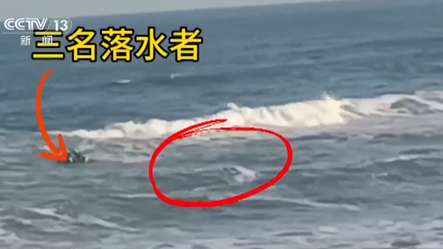Revolutionary U-Shaped Lifebelt Robot Enhances Ocean Rescue Operations
In an incredible display of technological advancement, a U-shaped robotic lifebelt has recently made headlines by rescuing three drowning tourists off the coast of Wanning, Hainan Province, China. The incident occurred on January 31, when a jet ski capsized, throwing the tourists into the choppy waters two kilometers from shore. With ocean waves rising high due to severe weather conditions, the quick response of the Wanning Blue Sky rescue team utilized cutting-edge technology to save the day.
A Quick Response in Challenging Conditions
As the jet ski overturned, a member of the rescue team spotted the struggling tourists. Tapping into advanced resources, the team first deployed a drone to assess the perilous situation from above. In the face of fierce gales that made it too dangerous to send another jet ski, they turned to the recently acquired U-shaped robot. This innovative device is designed to navigate waves of any height, proving its worth during extreme weather.
Within just five minutes, the robotic lifebelt reached the tourists, guided by a skilled surfing instructor. Remarkably, all three individuals were safely brought back to shore unharmed. The speed and effectiveness of this rescue illustrate not just the robot’s capabilities, but also the dedication of those involved in the operation.
A Game Changer for Water Rescues
The Wanning Blue Sky rescue team had implemented two of these robotic lifebuoys in December 2024, and it’s clear they have made a significant impact. Rescuers noted how the lifebelt performs exceptionally well when operating under typhoon conditions—when human intervention is often far too risky. As Ji Xiang, a member of the rescue team, pointed out, "During typhoons, it is extremely dangerous for human rescuers to enter the water, as waves can reach heights of three to four meters. However, the U-shaped water rescue robot can navigate waves of any height and operate seamlessly in both forward and reverse directions."
The introduction of such technologies raises a thought-provoking question: How much safer could our beaches become with more advanced robotic assistance?
The Future of Rescue Operations
The recent successful rescue not only shines a light on the power of robotics in emergency situations—especially in our coastal tourist hotspots—but also inspires thoughts on the broader implications for aquatic safety. As coastal weather continues to become more unpredictable due to climate change, having reliable technology is crucial.
The combination of human insight and robotic efficiency could redefine water rescue strategies, making them faster and more effective than ever before. This new duo of human rescuers and advanced robots working hand in hand could be the key to ensuring safety for beachgoers, whether they’re jet skiing or simply enjoying a day under the sun.
Final Thoughts
With innovations like the U-shaped robotic lifebelt making waves in the rescue sector, it’s an exciting time for advancements in AI and robotics in everyday life. Not only do they save lives, but they also complement human abilities where they are limited.
As we watch these technologies evolve, we can’t help but wonder what the future holds for AI in rescue operations. It’s a thrilling prospect, and the AI Buzz Hub team is excited to see where these breakthroughs take us. Want to stay in the loop on all things AI? Subscribe to our newsletter or share this article with your fellow enthusiasts.




